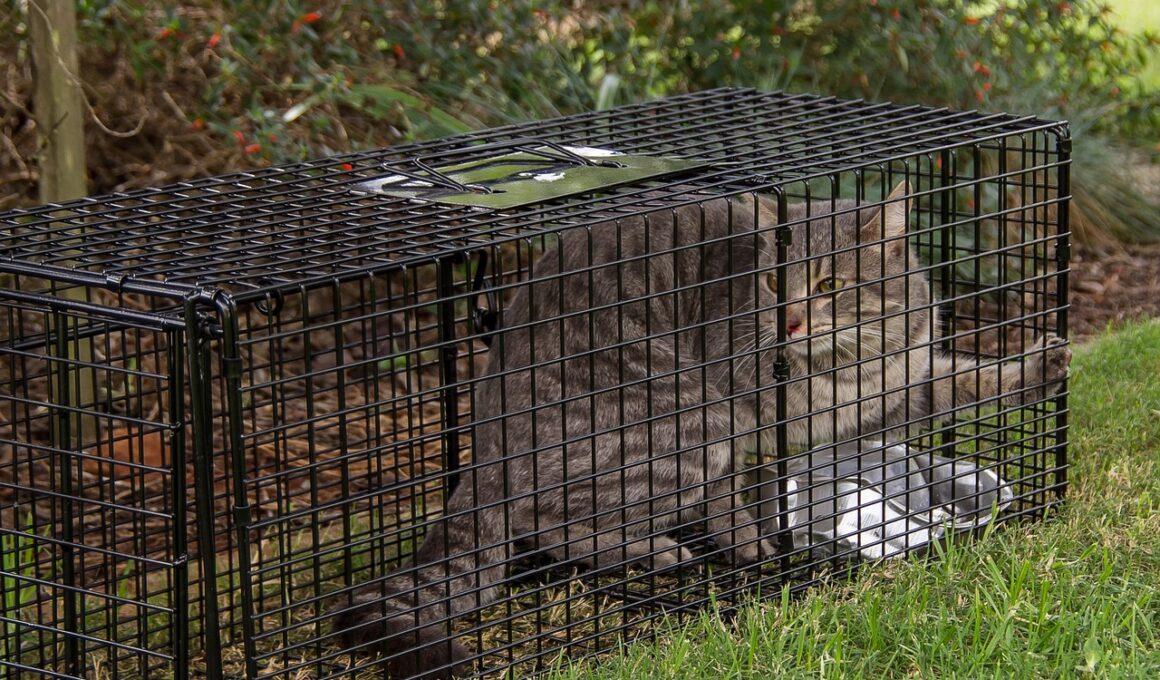Case Studies: Successful Trap-Neuter-Return Programs Around the World
Trap-Neuter-Return (TNR) programs have emerged as a leading strategy to manage feral cat populations globally. These programs are grounded in the humane philosophy of capturing feral cats, sterilizing them, and then returning them to their original locations. Such initiatives not only help control the population but also enhance the welfare of the cats involved. One successful model is in San Francisco, where TNR was implemented successfully in the late 1990s. A local organization collaborated with residents to provide resources for trapping and neutering. Within a few years, the city’s feral cat population began to decline noticeably. Moreover, the program educated the public on animal welfare and community involvement. Volunteers played a crucial role, helping to raise funds, organize trapping efforts, and provide food and shelter for the returned cats. TNR has since evolved into a compassionate approach that emphasizes the importance of every animal’s life. Programs like this foster community engagement, responsibility, and the understanding that animal issues need collective action and sustainable, long-term solutions.
The New Zealand Approach to Feral Cats
In New Zealand, the Department of Conservation initiated a robust program aimed at controlling feral cat populations through TNR and public awareness campaigns. The initiative was particularly important, as feral cats pose a significant threat to native wildlife. Through education and engagement, local communities were encouraged to participate in the TNR program effectively. The project began by identifying areas heavily populated by feral cats. Volunteers learned trapping techniques and became vital in executing the plan. The collaboration resulted in a decrease in feral cat populations in targeted regions, protecting small bird species crucial to New Zealand’s ecosystem. Additionally, community workshops and events helped spread awareness, teaching participants about the importance of spaying and neutering pets to prevent more feral cats from being born. TNR stands out as a humane and ecologically responsible way to mitigate the impacts of feral cats while enriching community ties. This successful initiative has set an exemplary standard for similar programs across the globe, demonstrating the effectiveness of community-driven animal management and conservation efforts.
In the United States, many urban centers have adopted TNR programs to help control the exploding feral cat populations. One prominent example is in Chicago, where Animal Control partnered with local animal advocacy groups to create a citywide TNR initiative. By providing resources such as clinics for sterilization at low or no cost, the program recruited volunteers who assisted with trapping, transportation, and subsequent care of the cats. The city witnessed a remarkable transformation with neighborhoods reporting fewer stray cats roaming the streets. Furthermore, local ordinances were adjusted to support TNR efforts, leading to greater acceptance among residents. This initiative developed a network of engaged citizens who recognize their role in improving animal welfare. Moreover, educational outreach emphasized responsible pet ownership, which plays a crucial part in reducing the number of abandoned and feral cats. The Chicago TNR program showcases how collaborative efforts between city officials, volunteers, and NGOs can lead to meaningful change. By altering perceptions about feral cats, these initiatives pave the way for compassionate, effective solutions that benefit animals and communities alike.
Canada has also embraced Trap-Neuter-Return as an effective method for managing feral cat populations. The Toronto Cat Rescue is one notable organization that has gained recognition for its impactful TNR program. With a sustainable model, the program involves trapping feral cats, providing veterinary care, and returning them to their respective territories. Prioritizing health and safety, the program enhances the quality of life for these animals while controlling their numbers. The enormous collaboration among volunteers has enabled them to successfully trap thousands of feral cats annually. Education is a vital component; the organization runs campaigns to inform the public about responsible pet ownership. By advocating spaying and neutering for pet cats, they aim to create lasting changes in community attitudes towards cats. Moreover, partnerships with local shelters ensure that adoptable cats are moved to loving homes. The successes of Toronto Cat Rescue have inspired similar programs across the nation as the understanding of humane population control continues to evolve. TNR programs across Canada exemplify how local initiatives can implement effective animal management strategies.
Success Stories Across Europe
European countries have also embraced TNR as a humane approach to managing feral cats, with Italy being a prime example. The city of Rome, known for its historical architecture, is also famed for its love of cats. Here, the TNR program gained momentum through collaboration among dedicated volunteers and local animal welfare organizations. Volunteers became proactive, ensuring the health of the city’s feline population through regular sterilization and healthcare. The effort extends beyond mere administration; caretakers provide food, shelter, and medical attention for these animals. The program’s positive impact has been seen in neighborhoods where feral cats are both cared for and accepted by the community. Furthermore, educational campaigns cultivate an awareness of the need for responsible pet ownership among residents. As a result, adoption rates for stray cats have increased along with community support. The Italian model serves to inspire not only neighboring countries but local communities worldwide. It demonstrates the importance of building strong networks dedicated to animal welfare and community cooperation for successful TNR programs.
In France, similar TNR initiatives have gained traction, particularly in urban areas like Paris. Local volunteers and organizations have collaborated with municipal authorities to create a network promoting education and responsible care of feral cats. The program has seen a surge in public participation. Volunteers engage in regular trapping and vet services, forming a core of community support behind the initiative. TNR in Paris has reduced the homeless cat population, leading to a healthier local ecosystem. Moreover, public perception has shifted, giving rise to a newfound admiration for feral cats as community companions. Awareness campaigns highlight the importance of spaying and neutering, enabling citizens to take action. The success of the TNR program exemplifies how strategic collaboration between communities, local governments, and animal groups leads to significant animal welfare improvements. Paris continues to be a beacon of hope, showcasing how urban settings can effectively manage feral cat populations while enhancing neighborhoods. This further emphasizes the role of empathy and dedication towards our feline friends, nurturing a culture of care across the city.
Global Outlook on TNR Programs
As TNR programs expand globally, communities are witnessing a remarkable transformation in how they approach feral cat populations. Countries like Australia and Japan have also embraced TNR, working tirelessly to stabilize and control community cat populations. In Australia, partnerships between animal welfare groups and local councils have spurred innovative TNR initiatives. They emphasize educating communities about the importance of responsible cat ownership, while in Japan, TNR has gained cultural acceptance. Local cat cafes promote the program, providing a platform for animal lovers to engage and participate. Each of these case studies underlines the versatility and effectiveness of TNR programs in various cultural contexts, demonstrating the common goal of achieving equilibrium within neighborhoods while ensuring cat welfare. Communities worldwide have begun to realize the critical role they play in addressing this issue collaboratively. By fostering compassion, responsibility, and education, TNR initiatives offer a model that can be adapted to different locations and circumstances, paving the way for a humane approach to feral cat management in the years ahead. The impact is set to grow as more and more communities champion the cause.
In conclusion, successful TNR programs highlight the synergy between community action and animal welfare. The case studies from around the world illustrate that with commitment and collaboration, communities can make a significant difference in managing feral cat populations. These initiatives promote humane treatment, reduce strays, and foster responsible pet ownership. Furthermore, TNR encourages community members to engage in the process, creating a culture of care and compassion. Education has emerged as a vital component of every TNR program, raising awareness about the consequences of abandonment and the importance of spaying and neutering. Adaptability is crucial: each program can evolve based on local needs while remaining focused on reducing the feral cat population humanely. Lessons learned from successful case studies will guide future initiatives, paving the way for a healthier coexistence among humans and cats. The collective effort to enhance feline welfare while protecting native wildlife holds promise. It is essential to view these challenges as opportunities for change towards more sustainable and ethical animal management practices globally. Ultimately, the success of TNR programs serves as a catalyst for broader understanding and appreciation of animal welfare around the globe.


